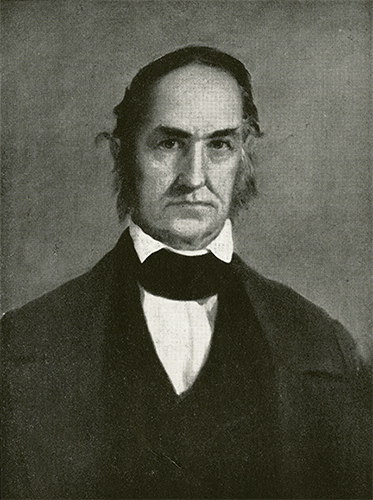25 June 1786–18 July 1854

James Smith Battle, planter, judge, and manufacturer, was born at Cool Spring Plantation, Edgecombe County, the son of Penelope Langley Edwards and Jacob Battle. He entered The University of North Carolina in 1802 but was not graduated. On New Year's Day, 1812, he married Mrs. Temperance Fort; she died in 1814, leaving a son, James Marmaduke. On 2 Dec. 1822, Battle married Sally Harriet, daughter of Samuel Westray of Nash County. They were the parents of William Smith, who married Elizabeth Dancy; Cornelia Viola, who married John Dancy; Turner Westray, married to Lavinia Daniel; Mary Eliza, married first to William Dancy and second to Dr. Newsom Pittman; Penelope Bradford, who married William Ruffin Cox; and Martha Ann, married to Kemp P. Battle.
Battle was a justice of the peace and judge of the court of pleas and quarter sessions, Edgecombe County. He was an active and faithful member of the Kehukee Baptist Church at the Falls of Tar River near Rocky Mount. A significant planter and enslaver through much of his life, he owned about twenty thousand acres of rich river land and enslaved several hundred people by the time of his death. In 1847, he purchased the Rocky Mount Mill, a cotton factory, and operated it with his son William Smith until his death. He was contracted to build and complete many miles of the Raleigh and Wilmington Railroad. He used the labor of his owned, enslaved people to complete this project.
An enslaved person on one of Battle's plantations got into an altercation with an overseer. The overseer, a white man, was stabbed by the enslaved person and died as a result. After a careful investigation of the circumstances, Battle was convinced that the enslaved person had acted in self-defense under extreme provocation and abuse. Battle therefore was determined to see that the enslaved person received justice. Battle became one of few enslavers ever in the South to defend an enslaved person in court against the charge of murdering a white enslaver or overseer. Battle engaged two leading members of the North Carolina bar to represent the enslaved person, and to one of them he is said to have paid the very substantial fee of a $1000 (which is worth about $35,000 in 2022). When the accused was judged guilty in a primary court and sentenced to death, an appeal was carried to the state supreme court, where the decision was reversed. The opinion of the Supreme Court of North Carolina in State vs. Will (18 N.C. Reports 121) is a landmark in southern jurisprudence.
Battle died at Westray, Nash County. A portrait of him by Sully is owned by a descendant.